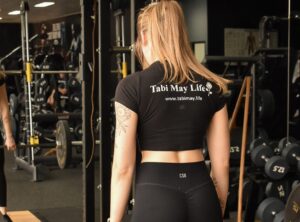Bones are living tissue that are composed of a rigid framework of protein fibres, mainly collagen, that are made hard and rigid due to mineralisation with calcium crystals. Specialised cells in the bones work to constantly remodel the structure of the bone. Old bone is constantly being replaced with new bone. When we are young we have more bone being formed than is being broken down. At about the age of 30 our bones are at their strongest and after the age of 50 the rate of bone formation slows and resorption increases. The imbalance between this bone resorption and formation causes the density of the bone to become reduced and can lead to debilitating conditions which impact our quality of life.
Osteopenia describes a decrease in bone mineral density below normal reference values but not yet at the point of Osteoporosis. One of the most common treatments for Osteopenia is physical activity and weight bearing exercise. Osteoporosis is a disease that occurs when bone mineral density decreases so much that the strength of the bone changes, increasing the risk of fractures. With Osteoporosis even a simple movement such as bending over or coughing can result in fractures.
Risk factors for poor bone health:
- Poor dietary nutrient intake
- Lack of physical activity
- Smoking and increased alcohol intake
- Gender (particularly women, especially post-menopausal women)
- Family history
- Hormones (some Thyroid conditions, disruption of Oestrogen levels in women and low Testosterone in males).
- Eating disorders and medical conditions that affect nutrient absorption such as Coeliac disease
- Some medications
While some risk factors are not necessarily modifiable, there are ways to optimise our bone health by making positive lifestyle choices.
Lifestyle factors that can optimise bone health:
Diet:
- Ensure adequate Calcium intake in your diet. This can come from sources such as dairy products, some vegetables such as broccoli and kale, fish such as sardines and tinned salmon with bones and soy products.
- Vitamin D is required by your body in order to be able to absorb calcium. Good sources of Vitamin D include oily fish, mushrooms, eggs and some fortified milks and cereals. Exposure to sunlight is very important to enable our body to produce Vitamin D.
- In some instances, supplementation of Calcium and Vitamin D may be required.
Exercise:
When we exercise, our muscles get stronger. They exert more force on the bones which encourages bone formation and increased bone density.There are 3 main types of exercise to be considered for bone health:
- Weight bearing exercise with impact loading: This is crucial for bone health and includes exercises that are performed on our feet and require our bones and muscles to work against gravity. For example, walking, dancing or hiking. When we add impact such as running or jumping, we further increase the bone strengthening benefits. Jumping activities that involve multidirectional changes are highly beneficial but should be carefully considered under medical advice if there is an existing diagnosis of Osteopenia or Osteoporosis.
- Strength training exercise: These may involve weights, machines or bodyweight exercises that make our muscles stronger and promote bone formation.
- Balance training activities: Yoga is very good for improving balance, stability and flexibility and reduce the risk of falls. Some forms of Yoga require a significant amount of strength to hold poses and therefore are considered weight bearing exercise as well.
If you do have an existing diagnosis of Osteopenia or Osteoporosis and are looking to start an exercise program to improve your bone health, reach out here! Together, we can take steps to develop a safe and suitable program, in conjunction with your healthcare professional’s advice, so that you can be on your way to enjoying all of the benefits of an regular exercise program!
Further information:
- Healthy Bones Australia, Exercise and Bone Density:
- Musculoskeletal Australia, Understanding Osteoporosis:
- Victoria State Government Better Health Channel, Osteoporosis and Exercise:
Copyright © Tabi May Life


 Creatine
Creatine
Leave a Reply